在此处更改您的语言和 LGT 位置。
私人客戶的數碼平台
登錄 LGT SmartBanking
金融中介機構的數碼平台
登錄 LGT SmartBanking Pro
解答常見問題 (FAQ)
LGT SmartBanking 幫助
解答常見問題 (FAQ)
LGT SmartBanking Pro 幫助
The best new libraries today have become living rooms for the digital age, where communities are encouraged not just to read, but also to gather, create, eat, and play. And it's no longer even a requirement to be silent.
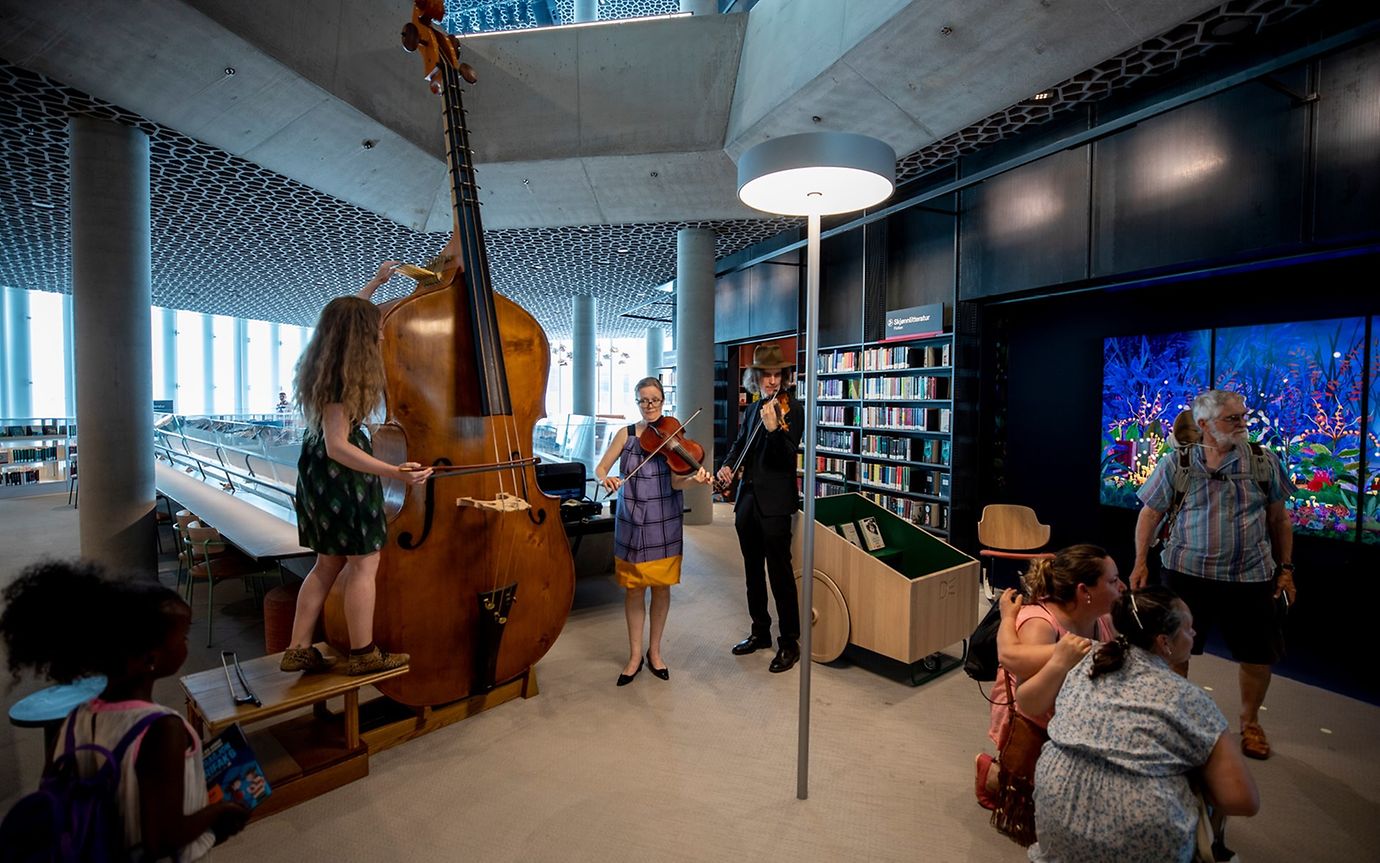
The great library at Alexandria was the ancient world's single greatest archive of knowledge, helping to cement Egypt as a global centre of learning. It arguably also created the model of the modern library, which did not change its basic function for thousands of years.
Libraries became repositories of information and temples to scholarship, which people would visit with awed, hushed reverence. In the popular imagination, libraries remain solemn places guarded by stern librarians.
Alongside this, however, there is now a completely different image, at least of city libraries. They redefine the purpose of the library itself, adding community functions as diverse as legal advice and 3D printing. Alongside this, however, there is now a completely different image, at least of city libraries. And some of the newer library buildings also incorporate stunning architecture and design.
Here are five of the most exciting new examples.

When staff at Ghent's new city library put out a call for help to install the books from the old building into the new, it was more a gesture than a serious request. The fact that dozens of people arrived at the striking new steel-clad building on a formerly derelict site on a bend (or crook) in the river Scheldt was taken as proof of concept. Residents of the city were ready for a space made for them.
More than 20,000 people filed through the front doors during the opening weekend in 2017, a number that has since settled down to more than 4000 a day. And those relocated books are now only part of what De Krook offers behind its steel and glass facade.

Conceived jointly by the city, Ghent University, and imec, a leading Belgian tech R&D lab, the library houses a student radio station, a language hub, and a makers' room, with 3D printers, laser cutters, soldering equipment, and sewing machines. There are community projects and an advice centre, where residents can ask vital questions about their legal rights and employment opportunities.
And while library traditionalists might not like the expanding definition of the modern library, it's notable that De Krook's books have become even more central to the building's mission. When the library became a landmark, a destination, and a cultural hub, book loans went up by almost 10 %.
When Helsinki hosted an architectural competition for the honour of building a major new library next to the central railway station, there was much excitement at one point about the idea that the building might include that truest tribute to Finnish culture: a sauna.
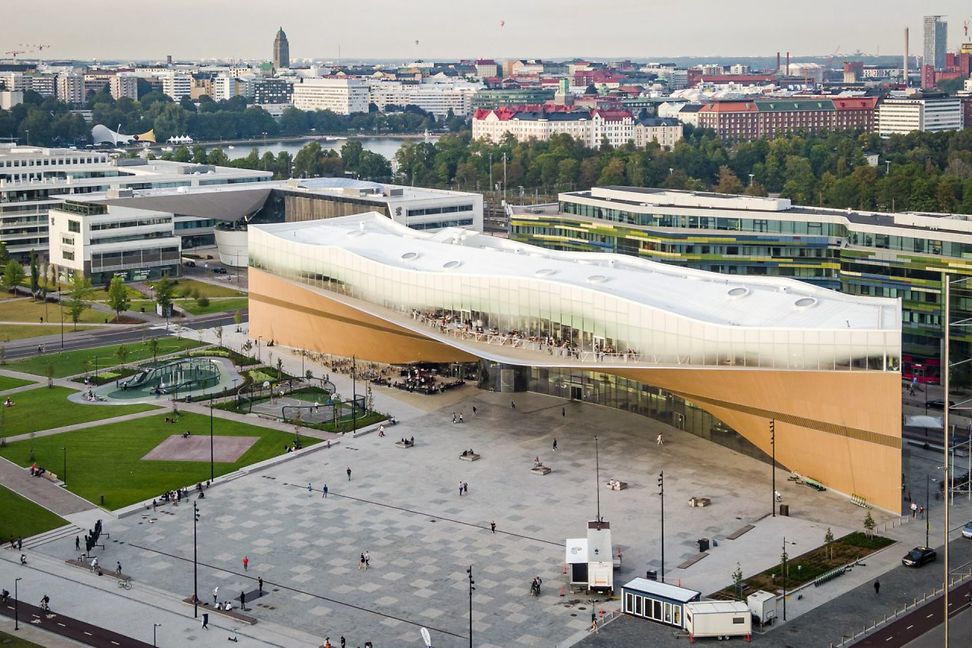
In the end, sitting in a hot, steamy room is one of the few things visitors cannot do at Oodi (pronounced "ode"), the Helsinki Central Library. Opened on a vacant plot in late 2017, just in time for Finland's celebrations of the 100th anniversary of its independence from Russia, Oodi does justice to Finland's proud reputation for having one of the world's highest child literacy rates.
Award-winning Finnish firm ALA Architects won the competition, and more than a million people streamed through Oodi's Finnish spruce and glass exterior in the first four months of opening, filling the airy structure that elevates its books to prime position in the top-floor "Book Heaven".
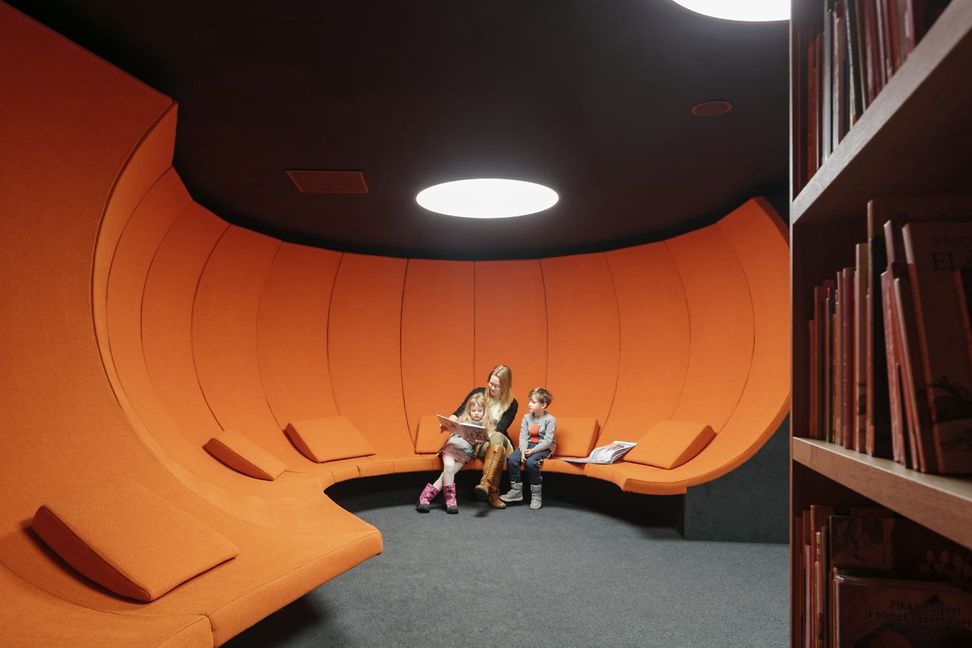
The books crown a vast space given over to multiple community services. There are studios for making music and films, a cinema, workspaces, meeting rooms, computer and board gaming areas, a children's section, and an urban workshop with access to equipment including 3D printers, sewing machines, and vinyl cutters. Throw in event spaces and cafes, and it's not surprising that Oodi welcomed its 10-millionth visitor this year.
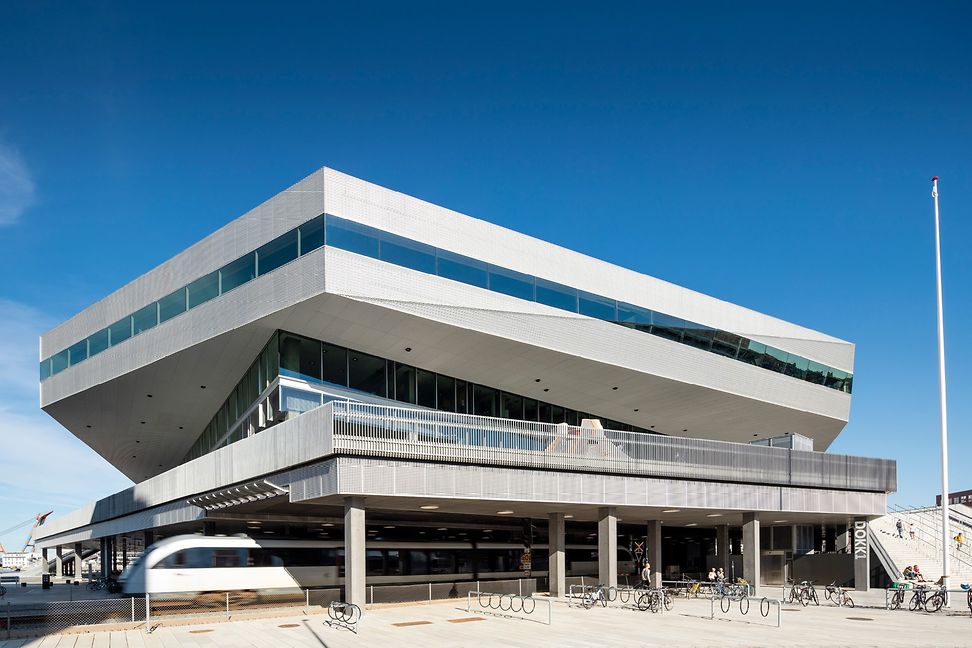
One of the striking features of Scandinavia's largest library, which sits on the banks of the Aarhus river where it flows into the harbour of the Danish city of the same name, is that it has no clear front or rear or heavy doors. Its concrete roof appears to float on its glass flanks at night, creating the sense of a vast harbour-front cultural beacon, as welcoming as it is monumental.
Dokk1 opened in 2015 as part of a major regeneration of Denmark's second city, which sits almost 200 km northwest of the capital Copenhagen. Its unconventional shape - a kind of imperfect hexagon from above - gives visitors 360-degree views either of the harbour, the city, or the surrounding forest.
Designed by Danish architecture firm Schmidt Hammer Lassen, Dokk1 was described by a partner at the firm as "not simply a building. It is a place for exchanging knowledge and opportunities, and a multicultural meeting point that will change people's perception of the entire city."
The library's public purpose is brought home in the sprawling ground floor plaza featuring the world's largest tubular bell. The suspended three-tonne steel tube, which hovers above visitors, rings every time a baby is born in the city.
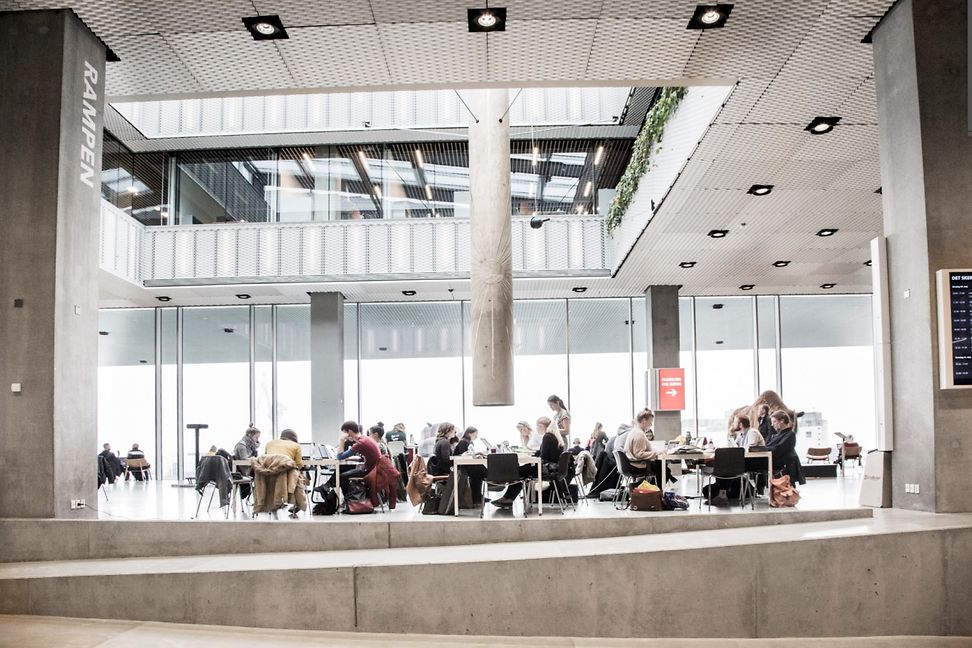
Children are well looked after with indoor and outdoor playgrounds and activities, and the building includes a range of community facilities beyond its lending library, from civic services to work spaces, meeting rooms, performance stages, and a cafe. In 2016, the International Federation of Library Associations and Institutions awarded Dokk1 its highest honour as the world's best library.
By the time he died in 1780, Carl Deichman, a Danish-born Norwegian mining tycoon, had become one of Europe's foremost collectors of books. In his will, he left all 6000 volumes, as well as his manuscripts, maps, antiques and coins, to the city now known as Oslo. The Deichman Library opened its doors five years later.
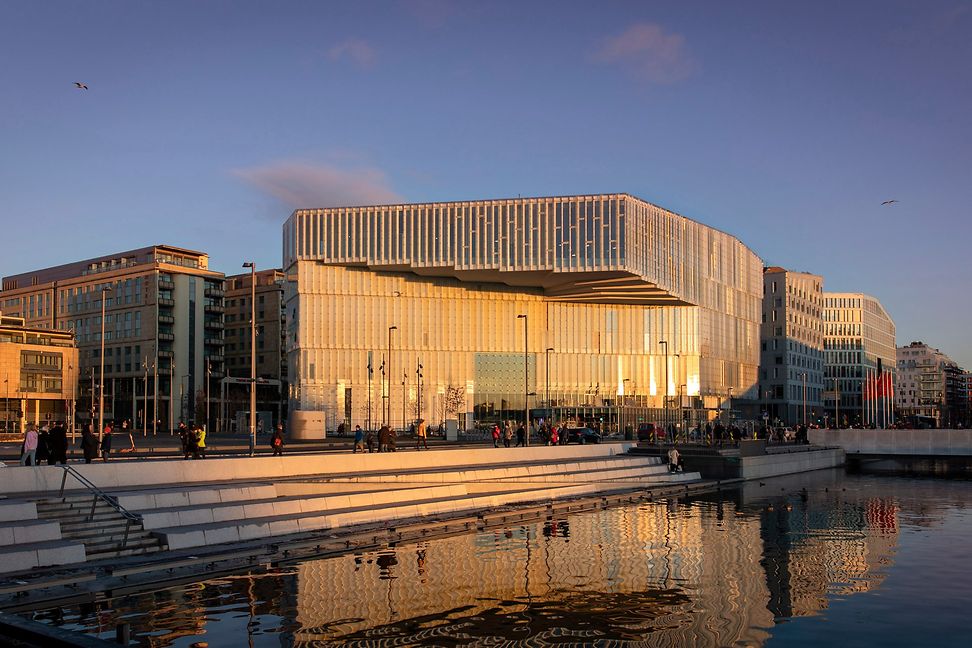
More than two centuries later, in 2020, the newest of more than 20 branches of Deichman's original library opened on Oslo's docks opposite its opera house. The man himself would be stunned to find his original collection within five stories of glass, including a cantilevered top floor that edges out over the water like a Jenga piece.
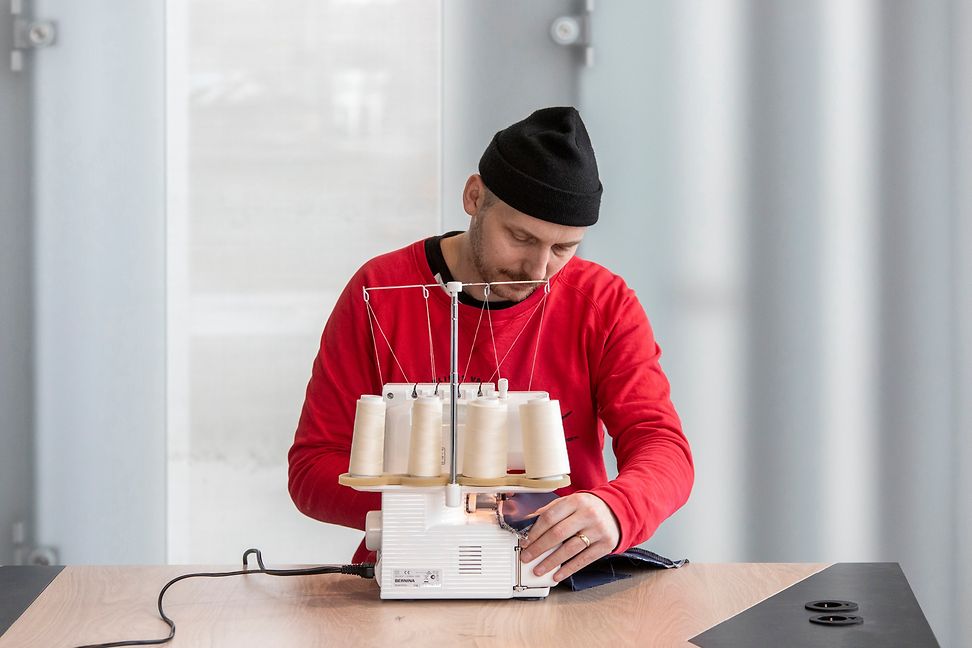
The light-filled building contains almost half a million books, while also providing services to musicians, for example, who can borrow instruments. There's a whole floor for children, as well as a cinema, an auditorium, a restaurant, and workspaces.
Deichman Bjørvika, which was designed by architects Atelier Oslo and Lund Hagem, also takes an innovative look into the future, with a project by the Scottish artist Katie Paterson that will outlive her. Each year between now and 2114, a writer will contribute a sealed manuscript to the museum, committing it to a steel case housed inside an undulating wooden installation inside the library's top-floor "silent room".
Nobody will read any of the 100 words until they are unsealed in 2114, when they will also be displayed in the library. By then, who knows how much further our expectations of what a library should be or look like will have changed?
For much of this century, China has served as a laboratory for architecture that pushes the boundaries of function, taste, and budget. It's hard to imagine any other city conceiving of a stadium as extraordinary as the "bird's nest" built for the 2008 Olympic Games, for example.
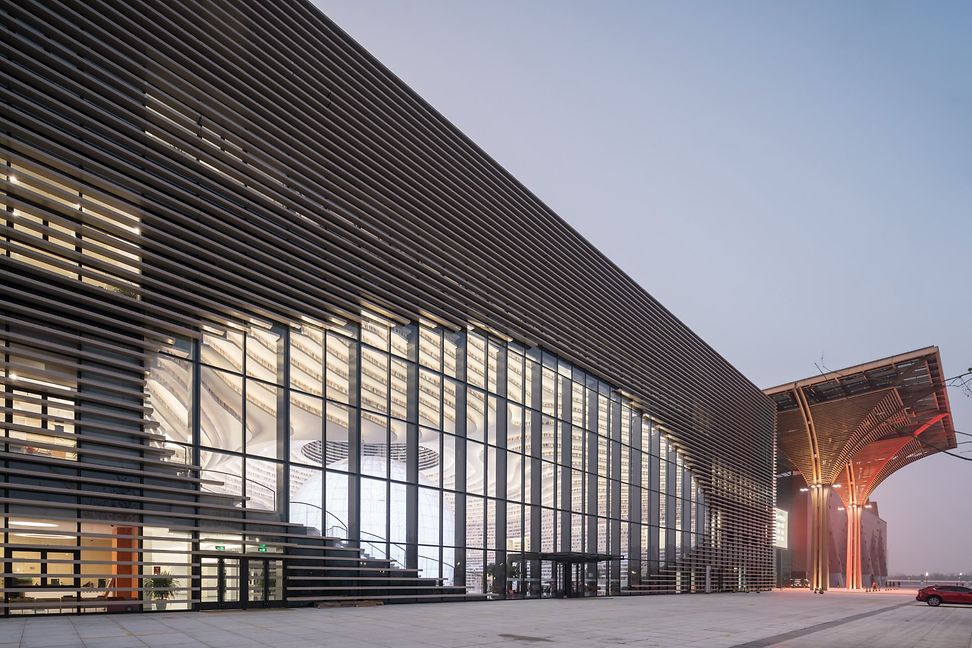
In 2017, the city of Tianjin, located on China's north-east coast not far from Beijing, revealed another startling reinterpretation of established forms with a new library in its Binhai Cultural Centre, a developing culture and tourism hub built on a former industrial site.
The library was quickly nicknamed "The Eye" - it has a ball-shaped structure in the centre of its atrium, which looks like the eyeball of an eye and can be seen from the park outside through an eye-shaped opening. This luminous sphere is in fact an auditorium, with seats inside for 100 people. All around the vast, cathedral-like atrium, the library spreads books along shelves that curve like the contours of a mountain map. More volumes are housed in rooms throughout the structure. With a total capacity of 1.2 million tomes, the book collection has plenty of room to grow.
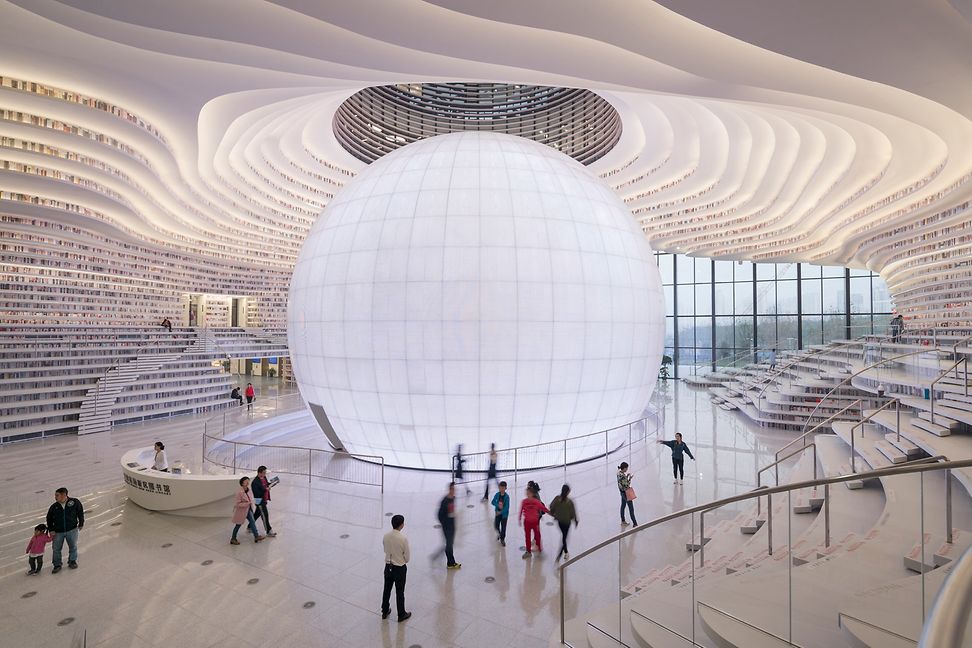
Long lines snaked outside the building when it opened in 2017, after images of the designs, by the Dutch firm MVRDV, had gone viral on social media. As well as books, the building includes meeting and reading rooms, computer areas, lounge spaces, and a downstairs children's area.
But the library's opening was not without incident. Local authorities had set such a demanding schedule for the building - three years from drawing board to opening - that the higher rooms, designed to access the top shelves of the atrium, had to be abandoned. With no way to reach these shelves, fake aluminium book spines were placed there instead.
Simon Usborne is a freelance feature writer and editor based in London, where he writes for major UK newspapers.